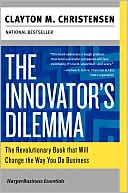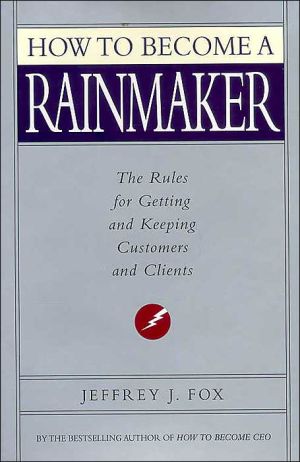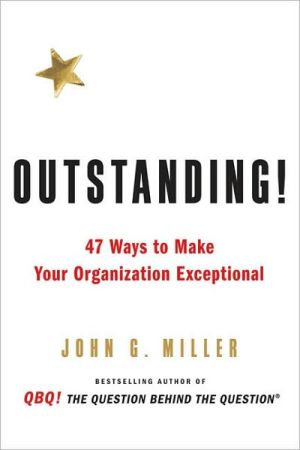Total Access
Marketing as we know it is disappearing, declares industry legend Regis McKenna. As marketers focus on advertising and promotion, the chief information officer is automating their core functions. As they obsess over brand, the chief strategy officer is dispersing their responsibilities throughout the organization. And as they squabble over whether marketing is an art or a science, McKenna argues that they're completely overlooking what marketing has become: a technology.\ What does this...
Search in google:
Marketing as we know it is disappearing, declares industry legend Regis McKenna. As marketers focus on advertising and promotion, the chief information officer is automating their core functions. As they obsess over brand, the chief strategy officer is dispersing their responsibilities throughout the organization. And as they squabble over whether marketing is an art or a science, McKenna argues that they're completely overlooking what marketing has become: a technology.What does this displacement mean for the future of marketing and its role in today's increasingly networked organizations? Who will manage the all-important customer relationship - and how? In this new book, McKenna marshals over forty years of experience as a marketing innovator, investor, and industry visionary to explore an emerging - and essentially different - marketing paradigm. Soundview Executive Book Summaries Regis McKenna professes that marketing has become a technology. He explains that computers can do most of the work that was once performed by marketers, including data gathering and customer care. He writes that marketers can no longer work on the outskirts of the process shaping images, but must instead manage this new infrastructure and integrate people and technological tools to deliver value to customers. Copyright (c) 2002 Soundview Executive Book Summaries
Chapter OneIntroduction The Idea of Marketing In today's brave new world of endless innovation, competition, and expansion, marketing is undergoing a complete redefinition and in the process taking on a whole new role in today's corporations. "What comes next?" is the question business must ask. Marketing as we know it is disappearing. Today software is assuming the role of listening and responding to customers. Customer relationship management (CRM) may be the most obvious example, but in essence everything the producer or consumer touches is absorbed into an information network where both computers and people store, recall, access, and act upon it. Caught in an interlacing web of interrelationships, traditional marketing is vanishing for the simple reason that its tasks are being automated and assumed by the mysterious and hidden power of computers, software, and networks. This book attempts to frame a discussion of what marketing is becoming, and to explore a new vision and a language for the emerging marketing paradigm. In this new paradigm, computers and the network do most of the work, such as data gathering, decision making, customer response and care, and much more; total consumer access to, and interaction with, the marketplace replaces the old broadcast model and makes us rethink our old notions of brand development; and the marketing function disappears into a network of relationships and responsibilities throughout the value chain—customers, producers, and producers' business partners. Based on my years of experience working with start-ups and mature businesses alike, talking with executives of both leaders and laggards, and observing the relationship between technology and business, I believe that the largely hidden infrastructure of computers, networks, and software will change us more rapidly and more reliably than the content will. Yet "old" marketing, operating as it does on the venerable model of trying to sell through a vague notion of brand, promotion, entertainment, and consumer manipulation, is unprepared for this change. Driven by new technology, marketing first arose in the collective consciousness with the commercial exploitation of mass production. The development of mass media, particularly television, reinvented it. Its third renaissance—which is where we find ourselves today—has come about because of the following five factors that drive the global competitive marketplace: 1. Production capacity is outpacing demand. Over the past twenty years or so, production systems have undergone vast improvements, to such an extent that almost every manufacturing-based industry can outproduce their market demand. 2. Programmable design and production tools, capable of rapid change and adaptability, supply an infinite array of product choices and novelty at no penalty of cost to the customer. 3. Logistics networks today are efficient, information-managed distribution systems that move and track an enormous diversity of products through an increasing variety of customer access points. These systems are the infrastructure so vital today for delivering low-cost fulfillment and customer satisfaction. 4. New digital information networks and media are dynamically altering the nature of the producer-consumer conversation. Easy, low-cost entry to a communications network to obtain, provide, or otherwise exchange information is changing the producer-consumer relationship from one of broadcast to one of access. 5. Competition is global, continuous, and more intense. Armed with the same technologies and driven to expand growth and market share, corporations are lowering prices, consolidating, and battling for the loyalty of the same (targeted) disposable-income customers. As a result, marketing is charged with keeping the factories churning. More and more of the budget is aimed at trying to create customer demand in an oversaturated, overdistributed, and overstimulated marketplace. Competition and technology are driving lower-cost products and more efficient operations, as well as two of the increasingly costly functions of an enterprise: marketing and customer support services. To address these five factors, businesses are looking to the new, lower-cost network technologies to connect with their suppliers, channels, and customers directly. To be efficient, responsive, and timely, businesses are connecting their internal information networks with supplier, channel, customer, and other alliance information networks. Within the enterprise, businesses are directing information flow and assigning responsibilities in accordance with their customers' stated needs or wants; as a result, they are developing a qualitatively unique infrastructure to support their customers. Building, deploying, maintaining, and adapting work processes to this new infrastructure can be complex, costly, and people-intensive unless systems and software take on the task by assuming the workload—which is essentially what's happening. As systems and networks evolve, computers are taking on more and more of the customer interface, relationship dynamics, and support functions. As a result, marketing is radically changing and disappearing into ubiquitous software applications, which are embedded in almost everything consumers touch or use. Marketing's place within the enterprise is changing as well; businesses are now distributing traditional marketing tasks throughout the enterprise. And as technology creates new tools and new ways of doing things—as computers, software, and networks automate marketing functions and infrastructure—marketing and information technology appear to be rapidly converging, forcing practitioners of the old reach-and-push traditions of marketing to take a smaller strategic role. A Look at Marketing's Genetic Heritage Marketing is an invention of the twentieth century, and for most of that century—the last eighty years or so—its goal was to infiltrate consumers' minds and to change their thinking. Marketers tried to influence consumers in a positive and directed manner through a combination of brand identification, promotion, entertainment, and manipulation. To support this goal of customer influence, marketing research didn't mine for new service methods for delivering customer satisfaction, automating services or ways to directly build customer loyalty; instead, it simply tried to discover the subtleties of how consumers think and behave. Even today, much of marketing strategy is driven by behavioral research methods such as focus groups, lifestyle analysis, and anthropological analysis derived from observations of consumers in "real" and staged situations. Marketing has yet to figure out how to keep customers happy using these methods or how to become a contributing and vital connecting force within the enterprise. Its tactics, I fear, are leading only to more market noise and increasing customer dissatisfaction. A July 2001 Economist cover story editorial said it best: Being a customer can be baffling these days. All that choice, all those special deals, all those companies eagerly telling you (as you wait on hold, listening to ghastly Muzak) that "your call is important to us." On the face of it, companies seem keener than ever to sell you their stuff—as, in these leaner times, they should be. But why do you so rarely feel that you are getting special service, or that the company knows the faintest thing about who you are or what you want?1 The kind of marketing we're seeing today is a descendent of past practices. It evolved along with twentieth-century mass-production mentality, and it has become something of a pseudopsychological propaganda machine. Today it is at once a corporation's most assertive public face and its most undefined and elusive activity. Marketing, like total quality management, is becoming a distributed and shared responsibility within the enterprise. We can no longer view it from a single perspective, just as it no longer operates through only one medium. These changes occurred for several reasons. For one, marketing hasn't kept up with the evolution of technology and business processes, causing it to fall into a malaise with its reliance on the pure broadcast model. While technology has become more and more transparent and adaptive, many marketing strategies have remained static models of a bygone era. Brand, now the center of all marketing activities, has been misinterpreted as attention, showmanship, events, and celebrity—even market valuation. In addition, consumer means and methods of interaction are changing, as is the whole marketplace, thanks to cultural, social, and economic forces. The result of all these forces? Let's take a look. The Phenomenon of Hype: Tactics over Strategy Everywhere I travel, I hear that marketing is more important to business today than ever, but the only thing I'm aware of is an increased noise level. There's a lot of hype out there, partly because the marketing function is too often equated with promotion and with the idea that branding is best achieved through awareness. Marketing people deny this assertion, but they continue to spend the largest portion of their budgets on advertising and various forms of promotion. Hype dominates the very idea of marketing, and despite some vibrancy, much of marketing has become obscure and even ridiculous. Thanks to the deafening noise of hype, we no longer know what is real, what is effective, or what common set of principles should guide the marketing process. One thing that's clear is that tactics have replaced strategy. For example, buzzword solutions, promoted as brands themselves and dispensed by branding consultants, proliferate. Terms such as "viral marketing" and "buzz" itself are some of the latest marketing "buzzword brands" used as new tactics for gaining the customers attention. And while the terms may be new, the concepts are old. The original ideas behind these terms have merit, but such terms reflect tactics that usually rely on traditional forms of broadcast tactics in an attempt to manipulate consumer behavior. Consequently, once those ideas are implemented, they usually end up as programs that generate more junk e-mail. In the past twenty years, marketing has become associated with increasing awareness and hype, relying on famous personalities, entertaining content, and clever tricks that gain media attention, tactics that have dominated marketing to such an extent that they've become ends in themselves. I've heard people call U.S. presidential candidates "competing brands." Religious organizations, universities, and other nonprofit groups are now analyzing and hiring "brand consultants," and British Prime Minister Tony Blair speaks of "branded politics." But what does brand really mean? We at The McKenna Group asked this question of 100 company executives and found no common thread other than a vague notion that brand equates with awareness.2 The term has lost its meaning in much the same way that marketing has. That isn't the only problem; brand is no guarantee, thanks to fleeting customer loyalty. Nevertheless, many businesses are still spending considerable sums of money on branding campaigns, ignoring the new technological and social realities that are shifting the marketplace from broadcast to access. Hype presents two problems: It has a short-lived effect (and isn't really marketing), and it belongs to the past era of push marketing. That said, it's unrealistic to expect traditional media to vanish anytime soon, if at all, and I doubt that the term brand will fade from use or stop tripping so easily from the lips of marketers and marketing consultants. Much of the $460-plus billion worldwide advertising industry rests on the belief that a repeated message can change people's opinions and their behavior, and that it can keep them coming back for more as long as they see or hear that message often enough.3 That belief may have held some truth when fewer media channels existed, when competition was less intense, when access to information was tightly packaged and controlled, and when product choices were more limited, but things were different in the past. Image making and promotion dominated marketing, and consumers had to work to get information. More than 1.5 billion people will have access to the World Wide Web within the next decade. We know very little about how this wide access will affect marketing or consumer behavior, largely because all we've seen on the Web to date has been market experimentation. Digital content and programming are still highly unrefined and random, and consumer use of this new medium and its content is highly variable. Broadband, which gives us the capability to communicate human expression and experience more realistically, is available to only a small percentage of the market. What we do know is that interactive consumers are not passive, as past marketing supposed. They are not anesthetized couch potatoes mindlessly absorbing images and messages. They're proactive, but they're also overwhelmed, oversaturated, and, for the most part, passive to mass media advertising. As broadcast media converge with the Internet, radical changes will take place in the economic and social interplay between the interactive consumer and interactive responding producer. Consumers will have tools for managing broadcast commercial messages, which will change marketing people's long-held assumption that millions of viewers are absorbing their messages and responding appropriately. With an interactive digital medium at their disposal, proactive consumers are powerful. The Internet is proving to be the perfect match for these proactive consumers, almost surreptitiously awakening them and drawing them into active participation. This awakening is the Internet's most significant effect on consumers, an effect that has yet to be fully realized. The Agent of Change: Technology Technology is the greatest catalyst for change in marketing. Technological innovations have had a huge effect, so much so that anyone would find it hard to overstate their repercussions on this part of business. This shouldn't surprise us; technology has always been the driver of change in marketing. From railroad to automobiles, from radio to TV to computers, marketing takes advantage of new technology and applies it to new methods of marketing. Although the technology may change, its role never does: It's always the agent of economic and social change. In marketing's short history, we've seen only a few truly revolutionary changes, but almost every significant change has resulted from the emergence of new technologies. Changes in the marketplace fostered by the prolific advances in computer-aided design, production, and distribution systems, as well as information and communication networks, are too often overlooked as fundamental marketing assets. Marketing is either empowered by or limited by the operational competence of a business. Today's logistics systems represent one of the most radical innovations in business, with benefits to both producer and consumer. Supply and distribution chain systems are creating faster and more efficient ways of moving products and information between suppliers, distribution centers, and consumer access points. Logistics is a transparent customer-satisfying service that has the great power of being responsive to customers and thus increasing customer loyalty. From research and development (R&D) to production and distribution, these highly efficient systems allow information, knowledge, ideas, and novel new products to flow in a constant stream. The convergence of digital technology and media with new ways of communicating catalyzes changes in marketing by increasing consumers' reach and range of choices, as well as by developing new vehicles to turn advertising into engaging customer communications. Imagine, advertising that listens and responds! Digital technology is improving customer access to myriad product and service choices, as well as to the information for deciding where and what to buy. As personal access technologies become more powerful, the consumer's needs, wants, and demands—not the behavioral models of back-room researchers—will program responses from producers. The "old" concept of marketing as mass message distribution arose when businesses were rapidly exploiting technologies of mass production. Mass production brought about the concept of mass marketing. New production methods and means of distribution—radio, television, and computers—significantly influenced the evolution of marketing over the course of the twentieth century. These same technological innovations have been the driving forces behind social change as well. New technologies don't simply replace old ways of doing things; they also replace old models of thinking. Marketing's goal has always been to build the relationship between buyer and seller; its reason for being has been to extend and sustain that relationship. And that's still true. In fact, that relationship is more important now than ever. Technology isn't doing away with that relationship; it's just changing how it's nurtured and sustained. The new tools of marketing are technological, network-based, enterprise solutions that help foster a direct, engaging, sustained buyer-seller relationship. These tools include supply chain integration and management, customer relationship management (CRM), logistics, Internet-based self-service and customer feedback solutions, database synchronization and access, as well as other software solutions. A Marketing Renaissance Digital information and network technologies are reinventing just about every business process, and marketing is by no means an exception. As a result of information technology (IT), the whole marketing organization is changing, losing its centricity within the enterprise. As more and more marketing functions are absorbed into the enterprise-wide information network and shared across all business functions, we will see that expertise diffuse. Information technology is now such an integral and essential component of responding to market changes and satisfying customers that executives from many areas of the corporation are making marketing decisions and executing marketing plans. Although affected by these changes, marketing appears to want to remain a separate and different breed of corporate animal. But it can no longer do so. The marketing organization is becoming increasingly fragmented. The creative functions of promotion and advertising have broken off, and piece after piece of the marketing function—including some key responsibilities like logistics and distribution, business development, strategy, supply chain management, Web site development, infrastructure management, value creation, partnering, and alliances—have been lopped off and allocated to different functional areas in the corporation. And while we continue to cloak marketing in conceptual terminology, using words like corporate identity, image, integrated marketing, and brand equity—chances are that the company's identity, reputation, competitive position, and value are more in the hands of the CEO, CIO, and the vice president of R&D than in the hands of anyone in a marketing position. In addition, IT is absorbing marketing functions that can be codified and put into software. Even the process of sustaining customer relationships—what some would call the very heart of marketing—is disappearing into the network and is no longer under marketing's purview. Direct network contact with the customer is creating constancy in those relationships. When a consumer orders from a company online, that communication initiates an interactive response. Information and communication move simultaneously inside the enterprise and interactively with the customer. The information is now stored and readily accessible by both producer and consumer. The Marketing Architecture A marketing architecture laces together the relevant players in the producer-consumer support system, adding content, services, value, and continued novelty as it matures. The goal of a marketing architecture is total access for both the customer and supporting services infrastructure. It aims to be not simply efficient but also creative. To achieve persistent market presence, companies today must sustain novelty and choice, an endeavor that requires them to generate a constant flow of new products and services in a variety of formats. Because providing customers with such a never-ending cornucopia of novelty is intellectually demanding, costly, and complex, companies need a marketing architecture to interweave the talent and resources within a continually learning, networked community that grows and expands as it engages customers, reacts to competition, and adds capabilities, new players, and scales. This business concept is not new, particularly to American corporations. To gain market advantages, U.S. companies have long developed alliances—for example, big companies with small ones, and universities with corporate R&D operations. The new wrinkle is the addition of facilitating networks and the newfound capability to evolve goals and objectives through continued interaction. In other words, the architecture learns as it matures. The goal of much of the partnering and alliance building we see today in all businesses is to achieve economies in time and costs in order to expand existing products and services, or to address new markets. A marketing architecture is essential for building a persistent presence in diverse geographic and cultural market segments. The information network adapts to the functional need of the person accessing it. Consumers want information, price, and availability, while retailers and suppliers want current transaction data categorized by outlet or region. Engineering and manufacturing may want information on returns and service demands or new product rate of acceptance, while logistics may want supplier or volume demand information. A marketing architecture is an evolving set of relationships, internal and external to the enterprise, that act in concert to supply services, products, and customer satisfaction. The systems are scalable so that they can be adapted to the size and growth of the product line or business. Integrating these functions into the enterprise network has many benefits. It improves marketing productivity and the reliability of information, and it reduces the costs of managing and maintaining customer relationships. Above all, it enhances creativity. And customers are happier because the support systems are direct, responsive, and always available. Human-to-computer communication today is not at all adequate from the consumer's viewpoint. Much of it is every bit as irritating as TV commercials. Market size and cost efficiency, however, will drive the means and methods of interacting and supplying services. As services become more and more a value-added part of businesses' revenues, those costly, people-intensive functions must become more automated. When labor began to consume a large percentage of production costs, automation changed the economics of manufacturing. Now, service costs are rising in all business categories. With over 80 percent of American jobs currently related to the service sector, the pressure to be cost competitive will hasten self-service automation. The reliability and responsiveness of both the products and the information generated, although seemingly mechanical, are in fact critical to the long-term customer relationship. Marketing is increasing as a corporate cost, and for that reason IT will continue to absorb most of the marketing activities that sustain a business over the long haul. Soon the IT infrastructure will have more to do with sustaining a brand and customer loyalty than with repeated advertising. The marketing function as we know it is increasingly losing control over the tangible means of addressing consumers' wants and needs. Who is responsible for developing and implementing the infrastructure for this e-marketplace? Not marketing. Software entrepreneurs and the CIO are driving most of these innovations. As a result, human involvement in marketing is diminishing. Even as marketing's image is being celebrated, marketing practitioners are on the verge of feeling massive repercussions from these far-reaching organizational changes. But while marketing practitioners are losing their former authority and reach into organizational strategy, the marketing functions themselves have not ceased to exist. Rather, marketing techniques for influencing people are being embedded into software and back-end support systems. An IT-Centered Marketing Organization
Contents Preface and Acknowledgments 1: Introduction: The Idea of Marketing 2: The Three Stages of Marketing: Reach, Push, and Access 3: New Technologies, A New Marketplace: The Laws 4: Forget about Loyalty: Problems with Branding 5: The Transformation of Today's Consumer: Preferences 6: The Customer Experience: Persistent Presence 7: Putting It All Together: The Marketing Architecture 8: Total Global Access: Act Globally but Connect Locally 9: Managing It All: Roles and Responsibilities 10: The Magic Touch: Corporate Creativity Notes Index About the Author
\ From Barnes & NobleThe Barnes & Noble Review\ Technology is irrevocably changing the ways in which business is conducted, and yet marketers don't seem to be adapting to these new realities, claims Regis McKenna, the author of this groundbreaking book. While customers confront myriad products and services, marketers, according to McKenna, are bent on ineffectively retaining their old roles as promotional megaphones used to tout brands -- even as the word "brand" itself becomes meaningless through overuse. McKenna defiantly sketches the contours of this new world, pointing out that brand loyalty is eroding, that production now outpaces demand, that global competition is more intense, and that what customers now value now are such qualities as access, price, novelty, choice, and speed. \ To succeed in this evolving environment -- and for marketing to stay relevant -- every member of a company must be a marketer, and marketers must become customer services "integrators and mediators." Instead of putting momentum into new ad campaigns and other traditional marketing imperatives, companies must embrace a strategy of "persistent presence." Marketing professionals will also have to create a more IT-centered organization, and McKenna offers numerous examples of success achieved by integrating a company's marketing and technology functions.\ McKenna's decades of experience and his fluency in high-tech innovations make this an absorbing and persuasive read. His case studies of important companies in many sectors -- from Apple to Coca-Cola to Starbucks -- offer compelling instances of persistent presence yielding results. Total Access is ultimately a book about more than marketing: It's a must-read for any business professional who wants to be part of a customer-driven organization. (Holly McGuire)\ Holly McGuire is a book editor and consultant based in Chicago, Illinois.\ \ \ \ \ \ Soundview Executive Book SummariesRegis McKenna professes that marketing has become a technology. He explains that computers can do most of the work that was once performed by marketers, including data gathering and customer care. He writes that marketers can no longer work on the outskirts of the process shaping images, but must instead manage this new infrastructure and integrate people and technological tools to deliver value to customers. Copyright (c) 2002 Soundview Executive Book Summaries\ \








